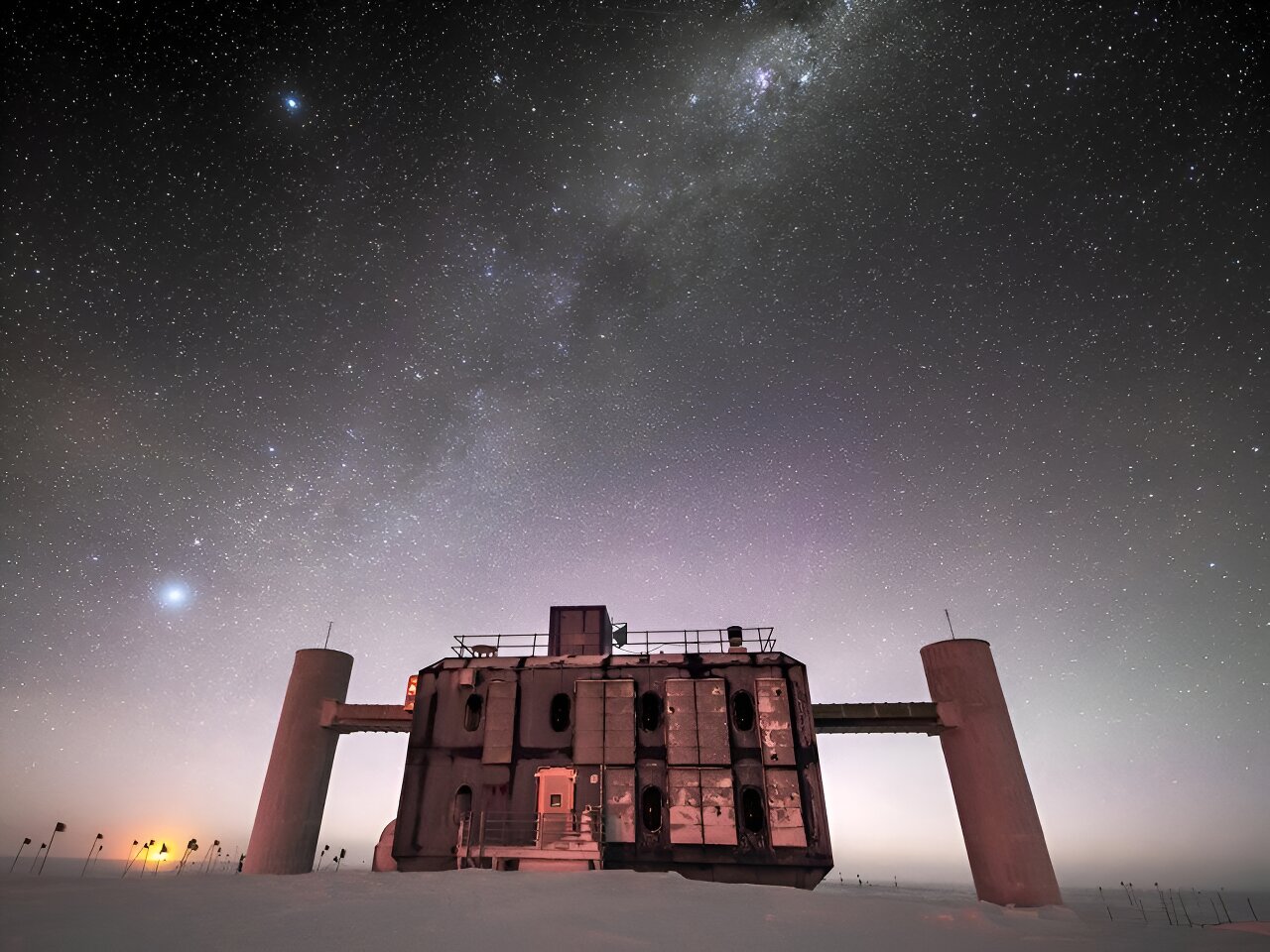The giant IceCube detector located at the South Pole continues to collect data on the most elusive elementary particles in the universe. Recently, scientists reported that they had found several events in the data they had collected over the past 10 years that could serve as confirmation of the existence of tau neutrinos.

Finding tau neutrinos
The IceCube Neutrino Observatory is a neutrino telescope located at the South Pole and has a volume of one cubic kilometer. Recently, it found traces of a particle that had not been previously observed before.
In a new study that was recently accepted for publication as a proposal from the editorial board of the journal Physical Review Letters (available on the arXiv preprint server), the IceCube team, that included researchers from the University of Pennsylvania, presented the discovery of seven once elusive astrophysical tau neutrinos.
Neutrinos are tiny subatomic particles that interact weakly with each other and are able to travel astronomical distances without interference. Thus, they can be traced back to their sources, revealing the secrets of their cosmic origin. Those of them that have high energy and originate from the most remote corners of our galaxy are called astrophysical. These cosmic messengers come in three different types: electron, muon, and tau neutrinos, the latter being extremely difficult to identify.
How IceCube works
IceCube detects neutrinos using chains of digital optical modules (DOM), a total of 5,160 DOM, embedded deep in the Antarctic ice. When the particles interact with the nuclei, blue light is produced, which is recorded and digitized by individual DOMs. This radiation forms characteristic patterns. One of these patterns, called a double cascade of events, indicates high-energy interactions of tau neutrinos in the detector.
Previous IceCube analyses found hints of these subtle signatures caused by astrophysical tau neutrinos, so the researchers did not lose motivation to locate these elusive particles. The researchers transformed data from each potential event into an image, and then trained convolutional neural networks (CNNs).
This allowed the researchers to distinguish images produced by tau neutrinos from other recorded events. After running simulations that confirmed the sensitivity of the method to these particular particles, it was applied to 10 years of IceCube data obtained between 2011 and 2020. As a result, seven probable tau neutrino candidate events were discovered.
Searching for the right signal
“The detection of seven candidate tau neutrino events in the data, combined with the very low amount of expected background, allows us to claim that it is highly unlikely that backgrounds are conspiring to produce seven tau neutrino imposters,” Cowen said.
Since tau neutrinos at observed energies can only be produced by astrophysical sources, their detection is also a convincing confirmation of IceCube’s previous discovery of these particles.
Cowen added that the probability that the background mimicking the signal was estimated to be less than 1 in 3.5 million, corresponding to more than a five-sigma significance, considered the statistical gold standard for new discoveries in physics.
Future analyses will include more IceCube strings because only the three brightest ones were used in this study. Such a new analysis will increase the sample of tau neutrinos, which can then be used for the first study of three types of phenomena when neutrinos change the appearance of so-called neutrino oscillations at cosmological distances.
According to the researchers, this type of research can provide answers to questions such as the mechanism of neutrino production from astrophysical sources and the properties of the space itself through which neutrinos pass.
Currently, there is no tool specifically designed to determine the energy and direction of the tau neutrinos that create the signatures observed in this analysis. Such an algorithm can be used in real time to better distinguish the potential tau neutrino signal from the background and help identify potential tau neutrinos at the South Pole.
According to phys.org
Follow us on Twitter to get the most interesting space news in time
https://twitter.comne/ust_magazine


